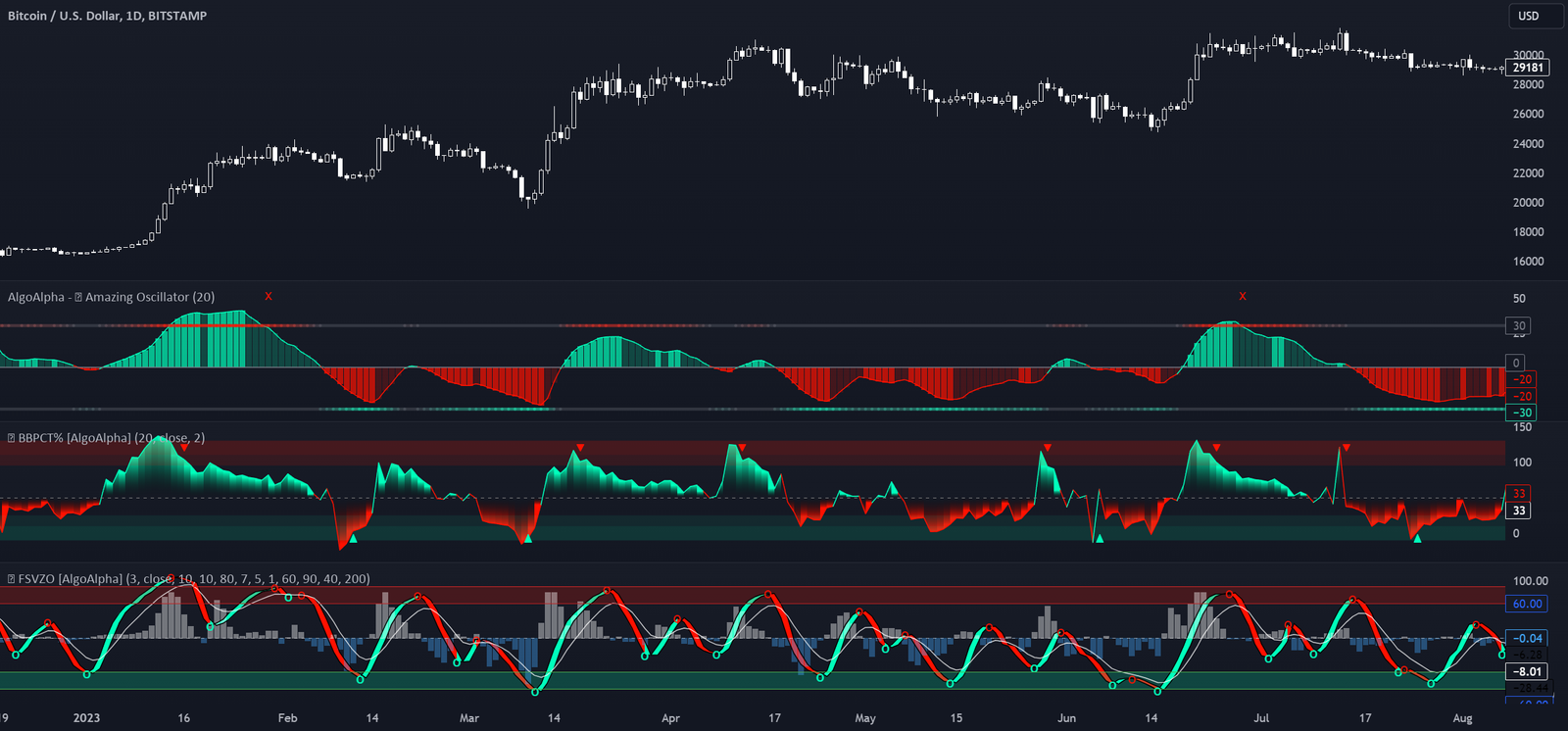The cryptocurrency market never sleeps, and neither should your trading strategy. Bitcoin trading signals analysis has become the cornerstone of successful digital asset trading, helping both novice and experienced traders navigate the volatile waters of cryptocurrency markets. With Bitcoin’s price movements creating millionaires overnight while devastating unprepared investors, understanding how to properly analyze trading signals can mean the difference between substantial profits and devastating losses.
Effective bitcoin trading signals analysis involves a systematic approach to interpreting market data, technical indicators, and fundamental factors that influence Bitcoin’s price movements. Professional traders rely on sophisticated analytical frameworks to decode market sentiment, identify optimal entry and exit points, and manage risk effectively. Whether you’re day trading, swing trading, or holding long-term positions, mastering the art of signal analysis provides the competitive edge necessary to succeed in today’s dynamic cryptocurrency landscape.
Understanding Bitcoin Trading Signals Fundamentals
Bitcoin trading signals represent actionable insights derived from comprehensive market analysis. These signals serve as digital breadcrumbs, guiding traders toward potentially profitable opportunities while helping them avoid costly mistakes. The foundation of successful signal analysis rests on understanding three core components: technical analysis, fundamental analysis, and market sentiment evaluation.
Technical analysis forms the backbone of most trading signals, utilizing historical price data, volume patterns, and mathematical indicators to predict future price movements. Chart patterns like triangles, head and shoulders, and double tops provide visual representations of market psychology, while oscillators such as RSI, MACD, and Stochastic indicators offer quantitative measurements of market momentum and potential reversal points.
Fundamental analysis examines the underlying factors that drive Bitcoin’s intrinsic value. This includes regulatory developments, institutional adoption, network hash rate changes, and macroeconomic conditions. When major corporations announce Bitcoin purchases or governments introduce favorable cryptocurrency legislation, these fundamental factors often trigger significant price movements that technical analysis alone might miss.
Market sentiment analysis captures the collective emotions and attitudes of market participants. Social media trends, news coverage, and investor behavior surveys provide valuable insights into crowd psychology. The famous “Fear and Greed Index” serves as a barometer for market sentiment, often indicating contrarian opportunities when extreme readings occur.
Essential Technical Indicators for Bitcoin Trading Signals Analysis

Moving averages represent the most fundamental tools in any trader’s arsenal. The 50-day and 200-day moving averages create the famous “golden cross” and “death cross” patterns that signal major trend changes. When the 50-day moving average crosses above the 200-day moving average, it typically indicates the beginning of a bullish trend. Conversely, when the 50-day drops below the 200-day, bearish sentiment often follows.
The Relative Strength Index (RSI) measures the speed and magnitude of price changes, oscillating between 0 and 100. RSI readings above 70 traditionally indicate overbought conditions, suggesting a potential price correction, while readings below 30 signal oversold conditions and possible buying opportunities. However, during strong trending markets, RSI can remain in extreme territories for extended periods, making it crucial to combine RSI signals with other indicators.
Bollinger Bands provide dynamic support and resistance levels that adapt to market volatility. When Bitcoin’s price touches the upper band, it may indicate overbought conditions, while touches of the lower band might suggest oversold scenarios. The width of the bands themselves tells a story about market volatility, with narrow bands often preceding significant price breakouts.
Volume analysis adds another dimension to signal interpretation. Genuine price movements should be accompanied by corresponding volume increases. When Bitcoin breaks through resistance levels on high volume, the breakout is more likely to sustain. Conversely, price movements on declining volume often lack conviction and may reverse quickly.
Advanced Pattern Recognition Techniques
Japanese candlestick patterns offer sophisticated insights into market psychology. Doji candlesticks indicate market indecision, while hammer and shooting star patterns can signal potential reversals. Engulfing patterns, where one candle completely encompasses the previous candle’s body, often mark significant turning points in Bitcoin’s price trajectory.
Support and resistance levels act as psychological barriers where buying and selling pressure intensifies. Previous highs often become future support levels, while former support areas may transform into resistance zones. Fibonacci retracement levels provide mathematical precision to these concepts, with the 38.2%, 50%, and 61.8% retracement levels frequently acting as significant turning points.
Trend lines connect significant highs or lows, creating visual representations of market direction. Valid trend lines require at least two connection points, with additional touches increasing their significance. When Bitcoin’s price breaks through established trend lines on high volume, it often signals the beginning of new directional moves.
Market Sentiment and News Impact Assessment
Cryptocurrency markets exhibit extreme sensitivity to news events and regulatory announcements. Understanding how to quickly assess and react to breaking news can provide significant advantages in signal analysis. Positive news about institutional adoption, regulatory clarity, or technological improvements typically generates bullish signals, while negative developments regarding security breaches, regulatory crackdowns, or technical issues often create bearish sentiment.
Social media sentiment analysis has evolved into a sophisticated discipline. Twitter sentiment, Reddit discussions, and Google search trends provide real-time insights into public perception. Tools like Santiment and LunarCrush aggregate social media data, creating quantifiable sentiment scores that can be incorporated into trading strategies.
The options market provides another window into trader sentiment. The put-call ratio reveals whether traders are positioning for price increases or decreases. Extreme readings in either direction often indicate contrarian opportunities, as market sentiment rarely remains at extremes for extended periods.
Institutional money flows significantly impact Bitcoin’s price movements. Monitoring corporate treasury announcements, ETF inflows and outflows, and whale wallet activities provides insights into large-scale market movements. When institutional investors accumulate Bitcoin during price dips, it often signals underlying strength despite short-term volatility.
Risk Management in Signal Analysis
Effective risk management transforms potentially profitable signals into consistently successful trades. Position sizing determines how much capital to risk on each trade, with the general rule suggesting never risking more than 1-2% of total portfolio value on a single position. This conservative approach ensures that a series of losing trades won’t devastate your trading account.
Stop-loss orders provide automatic protection against adverse price movements. Placing stop-losses below significant support levels for long positions, or above resistance levels for short positions, helps limit potential losses while allowing profitable trades room to develop. Trailing stops can lock in profits as favorable moves continue while still providing downside protection.
Risk-reward ratios quantify the relationship between potential profits and acceptable losses. Successful traders typically target risk-reward ratios of at least 1:2, meaning they’re willing to risk $1 to potentially gain $2. This approach allows traders to remain profitable even with a success rate below 50%.
Diversification extends beyond traditional asset classes in cryptocurrency trading. Spreading positions across different time frames, trading strategies, and market conditions reduces overall portfolio risk. Some positions might focus on short-term momentum signals, while others target longer-term trend following opportunities.
Position Management Strategies
Dynamic position sizing adjusts trade sizes based on signal strength and market conditions. Stronger signals with multiple confirmations might warrant larger position sizes, while weaker or conflicting signals suggest smaller allocations. The Kelly Criterion provides a mathematical framework for optimal position sizing based on historical win rates and average profit-loss ratios.
Portfolio heat monitoring tracks the total risk exposure across all open positions. Even with individual position risk limited to 1-2%, having multiple correlated positions can create unexpected portfolio risk. Maintaining awareness of total portfolio exposure prevents overconcentration in similar trade setups.
Profit-taking strategies determine when and how to close profitable positions. Taking partial profits at predetermined levels allows traders to secure gains while maintaining exposure to continued favorable moves. The classic approach involves taking 50% profits at a 1:1 risk-reward ratio and letting the remainder run toward larger targets.
Building Systematic Trading Approaches
Systematic trading approaches remove emotional decision-making from the trading process. Creating written trading plans that specify entry criteria, exit conditions, and risk management rules provides objective frameworks for signal analysis. These plans should address various market conditions, from trending markets to sideways consolidations.
Backtesting validates trading strategies using historical data. By applying signal analysis techniques to past market conditions, traders can estimate potential performance and identify strategy weaknesses before risking real capital. However, backtesting limitations include curve-fitting risks and the assumption that future market behavior will resemble historical patterns.
Paper trading bridges the gap between theoretical strategy development and live market execution. Simulated trading allows traders to practice signal analysis techniques without financial risk while building confidence in their analytical abilities. Most successful traders extensively paper trade new strategies before implementing them with real money.
Strategy optimization involves refining signal parameters based on performance feedback. This might include adjusting indicator settings, modifying entry and exit criteria, or incorporating additional confirmation signals. However, over-optimization can create strategies that work well on historical data but fail in live market conditions.
Technology and Automation Integration
Trading bots and automated systems can execute predefined signal analysis strategies with precision and speed impossible for human traders. These systems can monitor multiple timeframes simultaneously, execute trades based on predetermined criteria, and maintain consistent risk management protocols. However, automated systems require careful monitoring and periodic adjustments as market conditions evolve.
API integration allows traders to connect their signal analysis with various data sources and execution platforms. Real-time data feeds, news aggregation services, and social sentiment monitors can be incorporated into comprehensive trading systems. Programming skills or collaboration with developers becomes essential for implementing sophisticated automated strategies.
Alert systems notify traders when specific signal conditions occur. Custom alerts for technical indicator crossovers, price level breaches, or news events ensure that trading opportunities aren’t missed. Mobile notifications enable traders to monitor markets while away from their computers, though excessive alerts can lead to information overload and poor decision-making.
Machine learning applications in signal analysis continue advancing rapidly. Neural networks can identify complex patterns in market data that traditional technical analysis might miss. However, these sophisticated approaches require substantial technical expertise and computational resources, making them more suitable for institutional traders or highly technical retail participants.
Advanced Signal Confirmation Techniques

Multi-timeframe analysis provides comprehensive market perspectives by examining signals across different time horizons. A bullish signal on the daily chart gains additional significance when supported by similar signals on weekly charts, while conflicting signals across timeframes might suggest waiting for clearer market direction. This approach helps filter false signals and improves overall accuracy.
Intermarket analysis examines relationships between Bitcoin and other financial markets. Correlations with traditional assets like gold, stock indices, or the US dollar can provide additional context for signal interpretation. During risk-off periods, Bitcoin might follow stock market declines despite technical signals suggesting strength.
Seasonal patterns in cryptocurrency markets offer another layer of analysis. Historical data reveals tendencies for certain months or quarters to exhibit stronger or weaker performance. While seasonal patterns shouldn’t drive trading decisions independently, they can provide useful context for signal analysis.
Cross-exchange analysis compares Bitcoin prices and volumes across different trading platforms. Significant premiums or discounts on specific exchanges might indicate institutional activity or regional market dynamics. Arbitrage opportunities between exchanges can also signal short-term price direction changes.
Also Read: Crypto Rover Emphasizes Altcoin Oversold States
Signal Filtering and Prioritization
Signal strength classification helps prioritize trading opportunities. Strong signals might require confirmation from multiple indicators across different categories (technical, fundamental, sentiment), while weaker signals might serve as early warnings or secondary confirmation tools. Developing personal signal strength criteria creates more consistent decision-making frameworks.
False signal identification protects against common market traps. Whipsaw movements, where prices briefly break through support or resistance levels before quickly reversing, can trigger premature entries. Learning to identify these false breakouts through volume analysis and candlestick patterns reduces trading losses significantly.
Signal timing optimization addresses the challenge of early or late entries. Some traders prefer entering positions as signals develop, accepting higher risk for potentially better entry prices. Others wait for complete signal confirmation, sacrificing some profit potential for higher probability trades. Personal risk tolerance and trading style should guide these timing decisions.
Conflicting signal resolution becomes necessary when different analytical approaches suggest opposite market directions. In these situations, waiting for clarity, reducing position sizes, or focusing on shorter-term opportunities might be appropriate responses. Forcing trades when signals conflict often leads to unprofitable outcomes.
Real-World Application and Case Studies
Successful bitcoin trading signals analysis requires practical application of theoretical concepts. Consider a scenario where Bitcoin approaches a major resistance level around $45,000. Technical analysis shows RSI approaching overbought levels, while Bollinger Bands suggest the price is near the upper boundary. However, fundamental analysis reveals positive news about institutional adoption, and sentiment indicators show increasing optimism.
In this situation, a systematic approach would weigh multiple factors. The technical indicators suggest caution, while fundamental and sentiment factors remain bullish. A prudent strategy might involve waiting for either technical confirmation of a breakout (with volume) or fundamental confirmation through concrete adoption announcements before taking significant positions.
Another example involves Bitcoin breaking below key support at $40,000 during negative news cycles. Technical analysis shows violation of uptrend lines, RSI declining toward oversold territory, and volume increasing on the breakdown. Sentiment indicators reflect extreme fear, while fundamental factors remain neutral.
This scenario presents a potential contrarian opportunity. While technical signals suggest continued weakness, extreme sentiment readings often mark market bottoms. A careful approach might involve scaling into long positions as sentiment reaches extreme levels, using tight stop-losses to limit downside risk while positioning for potential reversals.
Integration with Portfolio Management
Signal analysis should align with broader portfolio management objectives. Growth-oriented portfolios might emphasize momentum signals that identify trending opportunities, while income-focused strategies might prioritize mean-reversion signals that capture price corrections. Understanding how individual signals contribute to overall portfolio goals ensures consistent strategy implementation.
Tax considerations affect signal analysis implementation, particularly for active traders. Short-term capital gains rates significantly impact net returns, potentially making longer-term signal strategies more attractive from an after-tax perspective. Consulting with tax professionals helps optimize signal-based strategies within appropriate tax frameworks.
Psychological factors influence signal analysis effectiveness more than many traders realize. Confirmation bias leads traders to favor signals that support their existing market views, while fear and greed can cause premature entries or exits. Developing awareness of these psychological tendencies and implementing systematic approaches helps maintain objectivity.
Performance tracking and analysis enables continuous strategy improvement. Maintaining detailed records of signal-based trades, including entry and exit reasons, market conditions, and outcomes, provides valuable feedback for refining analytical techniques. Regular performance reviews identify strengths and weaknesses in signal interpretation skills.
Conclusion
Mastering bitcoin trading signals analysis represents a journey rather than a destination. The cryptocurrency market’s dynamic nature demands continuous learning, adaptation, and refinement of analytical skills. Successful traders combine technical expertise with disciplined risk management, emotional control, and systematic approaches to market analysis.
The integration of multiple analytical perspectives – technical, fundamental, and sentiment-based – provides the most robust foundation for signal interpretation. However, remember that no analytical method guarantees success, and proper risk management remains the cornerstone of long-term trading profitability.
As you develop your bitcoin trading signals analysis capabilities, focus on building systematic approaches that can be consistently applied across varying market conditions. Start with simple techniques, gradually incorporating more sophisticated methods as your experience and confidence grow.
Take action today by beginning your structured approach to bitcoin trading signals analysis. Whether you’re a complete beginner or experienced trader looking to refine your skills, consistent practice and disciplined application of these principles will enhance your cryptocurrency trading success over time.


